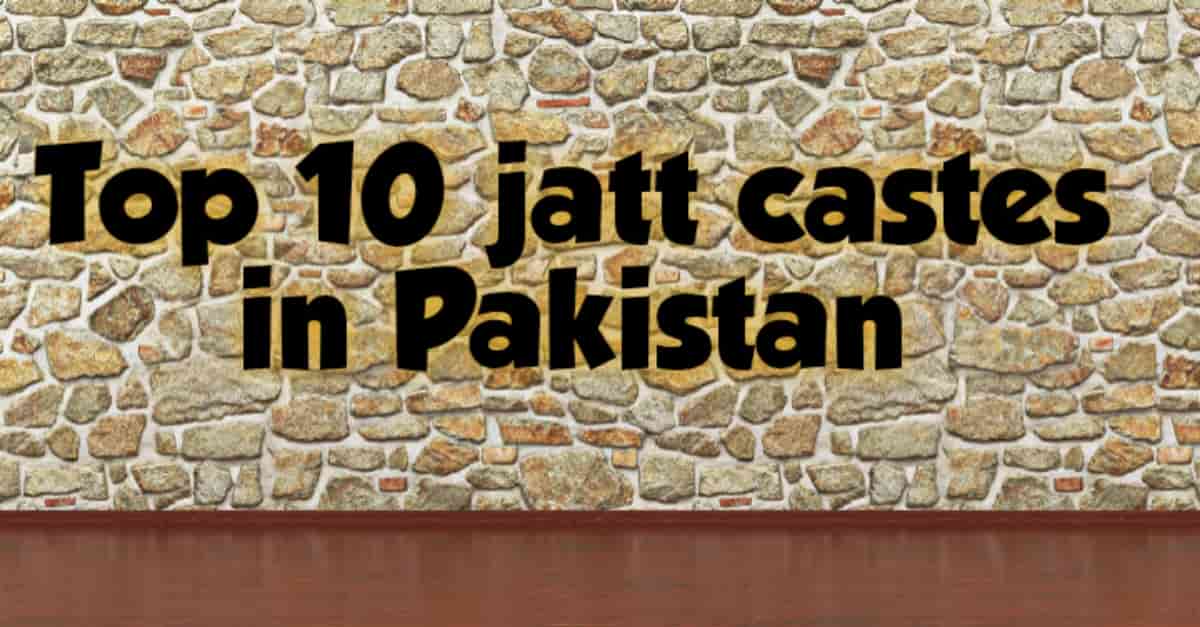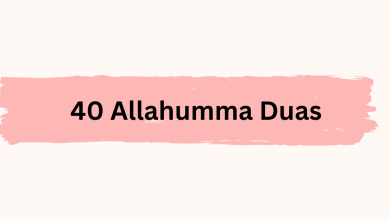
As indicated by 1901 Census, the top 10 Jatt castes in Pakistan include the Wariach, Cheema, Bajwa, Chadhar Sandhu, Tarar Gill, Virk, Ghumman, Hanjra and Bains. While as per the 1911 Census of Punjab, the ten biggest were Wariach, Gondal, Cheema, Bhatti, Khokhar, Sandhu, Kharral , Bajwa, Gill and Tarar.
Table of Contents
Top 10 Jatt castes in Pakistan
1- Waraich
It is one of the highest Jatt castes and famous/big caste in Pakistan. According to population, it is the biggest Jat clan in Punjab. Aside from Pothohar, the Wariach were found all through Punjab beginning with Gujrat/Shahpur up to Karnal. Warraichs are prevalently Muslim, having followed Hinduism and other Indic religions before the coming of Islam in South Asia. See Also Top 10 Brahmin Caste list – Latest 2023
In Pakistan, Warraichs are for the most part found in the regions of Gujrat and Gujranwala.[1] They are additionally gotten comfortable Lahore, Multan, Rawalpindi, Bahawalpur, Dunyapur Tehsil of Lodhran, Faisalabad, Chichawatni and Sargodha.
Waraich is a champion ethnic group of the Jat individuals of India and Pakistan who are relatives of Indo-Scythian clans. Substitute spellings incorporate Baraich, Braich, Araich, and Varaich, contingent upon which Punjabi tongue is being utilized.
2- Cheema
It is one of the top 10 Jatt castes in Pakistan. Found mostly in Gujranwala and Sialkot. In the old Gujranwala Bar, the Cheema were the single prevailing clan. Little gatherings of Muslim Cheema were likewise found in Jallandhar and Amritsar District. Presently found in Faisalabad and Sahiwal. In Sargodha, there are a few towns of East Punjab, Sialkot and Gujranwala Cheema, the principal bunch came as outcasts while others were pioneers. Seperate from these Cheema are those of Gujar Khan in Rawalpindi, who believe themselves to be Rajputs. In numbers they are the third biggest Muslim Jat clan.
Cheema is a Punjabi Jatt caste of India and Pakistan, they have a high focus in the towns of Gujranwala and abutting portions of Sialkot. Generally People of Cheema last name are Sikhs in east Punjab and Muslims in West Punjab.
3- Bajwa
As sub castes of Jutt, Bajwas are mostly lives in all tehsils of Sialkot with the exception of Daska. It is one of the top 10 Jatt castes in Pakistan. In the Sialkot tehsil they occupy the Bhagowal zail. In the Zafarwal tehsil they are gathered around Chawinda, in the Raya tehsil around Narowal, while in Pasrur they are discovered fundamentally in the northwest with base camp at Kalaswala. Outside to the Sialkot, they live in Gujranwala and Faisalabad Divisions. This is considered as one of the five biggest Jat clan in Punjab
As one of the top 20 Jutt castes in Punjab, Bajwa is a conspicuous Jat tribe of the Punjab. They guarantee Suryavanshi jats plummet. The precursor of the Bajwas is Baba Manga. Their place of beginning is Bajwat in the Sialkot and Narowal areas of Pakistan.

4- Chaddar
Chaddar is one of the top 10 jatt castes found basically in Jhelum, Jhang, Faisalabad, Sargodha, Sahiwal, and Toba Tek Singh. A couple of Chadhar Jats were additionally found in Amristsar and Firuzpur regions, who all moved to Pakistan in 1947.
Chadhar, a clan found among the two Rajputs and Jats. … They are Chandra Vanshis, and it is generally accepted that they are a part of the Tomar Rajputs, with the part of the clan of in Jhang saying that they are the relatives of Raja Toor and that they relocated into the Punjab from Rajputana.
5- Sandhu
They are found all through focal Punjab in numerous towns. They have assumed a huge part in the social and political range of Pakistan. Numerous eminent Sandhu families lives in Lahore District (otherwise called Majha). They likewise have an impressive presence in Sheikhupura District, Sialkot District, Gujranwala District, Gujrat District and Faisalabad District (albeit the Pakistani Sandhu Jatts are the relatives of Sandhus who relocated from Punjab and Haryana).
Sandhu is a Jat tribe in the Punjab area of India and Pakistan. In India, Sandhus are generally Sikh with a minority of Hindus and Muslims.
6- Tarar
As one of the most dangerous castes in Pakistan, Tarar found mostly in Hafizabad, Gujranwala, Mandi Bahaudin, Sargodha, Gujrat and Jhelum areas
Tarar is a Punjabi clan and Jat gotra of Northern India and in Punjab area of Pakistan.
As per 1911 registration the Tarar were the key Muslim Jat family in areas:
- Jhelum District – Tarar (745)
- Gujrat District – Tarar (14,365)
- Sargodha District – Tarar (1,716)
In Pakistan, Tarars is quite possibly the most instructed and grounded family, particularly among any remaining Jat Castes. Tarar is viewed as an illustrious standing in Pakistan because of their own standard and administration in focal Punjab dated back from Mahmood Gaznavi’s intrusion of India till Mughals. They are fanned out in present-day in Hafizabad, Mandi Bahauddin and Gujranwala dist and a little town Sherpur of dist Jhelum of Pakistani Punjab and Indian provinces of Haryana, Rajasthan and Uttar Pradesh. Tarars are a very knowledgeable and exceptionally rich country. At present, Tarar families are controlling an incredible piece of organization of Pakistan and assuming a functioning part in Pakistani Politics also.
Origin!
In Hafizabad District, Tarar towns incorporate Sindhowan Tarar, Rasoolpur Tarar, Beri Wala, Vanike Tarar, Kolo Tarar, and Muzaffar Tarar. While in Mandi Bahauddin area, most Tarar towns are found in Mandi Bahauddin and Phali tehsils. See Also Filmy4wapxyz – Watch & Download Free Movies & TV Shows – Latest 2023
In Phalia Tehsil their towns incorporate Chak Abdulla, Chak Kamal, Chak Mitha, Charound, Chayto, Dhaboola, Dhal, Dharekan Kalan, Dhola Khurd, Dhunni Kalan, Dhunni Khurd, Ghanian, Ghoghanwali, Gujjan, Haigerwala, Jago Kalan, Jokalian, Haigerwala, Kot Hamid Shah, Adda Pahrianwali, Agroya, Bahri, Bhagat, Bhekho, Bherowal, Bhoa Hassan, Bumbi, Burj Ghanian, Kot Sattar Sharqi, Kuthiala Sheikhan, Ladher, Lakhia, Mailu Kohna, Sohawa Dilowana, Sulaiman, Tariqabad, Thatha Alia, Mangat, Mano Chak, Melu, Mureed, Pejo Kot, Pindi Kaloo, Raike, Randiyali, Saida Sharif, Sainthal, Sarang, Thathi Mureed, and Thatti Shah Muhammad.
In Mandi Bauddin Tehsil and incorporate Balhar, Chak Basawa, Chak Shabaz, Chak Mano, Barri Tarar, Kala Shadian, Kot Pundiwala, Lak, Ghanian, Rattowal, , Shaheedanwali, Takhat Mal Tarar and Wasu. Outside the center Tarar region, there are additionally a few Tarar towns in Pind Dadan Khan Tehsil of Jhelum District like Dhudhi Thal, Kot Umer and Sherpur.
7- Gill:
They guarantee to have gone to the Punjab from South through Rajasthan. They are descnded from Waryah Rajput clan leader Vinepal, who came to Rajasthan and assembled the stronghold of Bhatinda along the banks of Sutlej at Bathinda. Setting up his capital here, he caught the regions up to Peshawar.
Found all through focal Punjab. In numbers one of the biggest tribe in Punjab.
8- Virk:
In Punjab (Pakistan), a greater part of Virks mostly live in the city of Sheikhupura and some are dispersed in Sialkot District as well. There is a little town in Sialkot known as Virk, possessed by Virk Jats. Virks actually control the city of Sheikhupura (the old Virkgarh), both strategically and monetarily. One of the bigger Muslim Jat family. In India, the Sikh Virks are principally amassed in the Karnal region of Haryana. Conspicuous Virk families are gathered in towns around Tehsil Assandh, District Karnal, and a couple are briefly living in Patiala District.
9- Bhatti:
Bhati is a faction of Rajputs, Gurjars, and Jats found in India and Pakistan. The Bhati Rajputs (otherwise called Bargala) guarantee Chandravanshi origin.
In Jaisalmer, the Bhati tribe once in a while allude to themselves as the Yadavpati, mirroring their guaranteed legendary drop from Krishna and Yadu. However, antiquarians express that such plummet was manufactured by Brahmins to give the low rank Rajputs more prominent status and distinction in an interaction called Rajputization.
Bhattis lost their land!
In the years going before the Indian defiance of 1857, these gatherings lost land by choices made by the British East India Company, which alloted to Jat laborers touching grounds in the past frequented by the Bhatis in the Delhi and Haryana locales. The British were not fascinated of roaming clans, whom they thought demanded security in the spaces that they visited, and the approaches of land change were planned to some degree to restrict this mobility.
Probably a portion of the Bhati Rajputs of Rajasthan were among the networks that rehearsed female child murder between 1883–1998. One princess, a girl of the Hindu Bhati managing family in Dipalpur, was hitched to Salar Rajab, a Turkic Muslim ruler, and brought forth Firuz Shah Tughlaq.
This was one of a few instances of between strict imperial marriage collusions during the time of Turkic Muslim principle in the Indian subcontinent. Rajput Bhati princesses were likewise hitched into the regal group of Jodhpur.
The Sikh Sidhu Jatt caste leaders of Patiala and Nabha additionally guarantee plunge from the Bhati ruler Rawal Jaisal. Geologically, the Sidhu are from the Punjab district of India.
In certain pieces of current Pakistan, particularly in the Northern and Central Punjab, low-standing doms (or Mirasi artists/artists) presently additionally call themselves ‘Bhati’; a reality profoundly detested by the true Bhati Rajputs of Pakistan.
10- Kokhar:
The Khokhar are a native local area of the Punjab district situated in the northern Indian subcontinent. The Kokhar which is one of the top 10 jatt castes assigned as a rural clan during the British Raj period. The term rural clan, as per the Punjab Land Alienation Act, 1900, was around then inseparable from military race.
In Punjab, the Khokhar clan was exceptionally persuasive during the thirteenth and fourteenth hundreds of years. Afterward, the Gakkhars turned out to be more significant. Their boss, Kamal Khan Gakkhar, was made a Mansabdar by Emperor Akbar.
Types of Jatt castes in Pakistan
In Pakistan, the term “Jatt” is often used to describe a significant agricultural community. However, it’s important to note that Pakistan’s societal structure is complex, and using the term “Jatt” can encompass various ethnic groups. Jatts primarily hail from the province of Punjab, which is known for its fertile land and extensive agriculture. They have a strong presence in the region and are involved in farming activities.
Jatt castes List
Here’s a brief overview of some of Top 5 Jatt/jutt castes or groups in Pakistan:
- Warraich: The Warraich Jatts are found predominantly in the Gujrat, Sialkot, and Gujranwala districts of Punjab. They are known for their involvement in agriculture.
- Sial: The Sial Jatts are primarily found in parts of Punjab, particularly in the Sialkot district. They are actively engaged in farming and other agricultural activities.
- Cheema: They are famous Pakistani Jats. The Cheema clan is one of the prominent Jatt groups in Punjab, particularly in the Hafizabad and Gujranwala districts. They have a strong presence in the agricultural sector.
- Sandhu: The Sandhu Jatts can be found in various regions of Punjab, and they have a significant role in agriculture.
- Bajwa: The Bajwa Jatt clan is scattered throughout Punjab and plays a key role in the farming community.
It’s important to remember that these are just a few of the Jatt groups in Pakistan, and there are many more. The Jatt community is diverse, with numerous sub-clans and variations in customs and traditions.
In Pakistan, agriculture remains a vital part of the economy, and Jatt farmers play a significant role in contributing to the country’s agricultural prosperity. They are known for their hard work, dedication to farming, and their ability to cultivate the rich soil of Punjab effectively.
The Jutt Caste: A Brief History
The Jutt caste is one of the prominent and ancient communities found in the Indian subcontinent. With a rich history dating back centuries, the Jutts have played a significant role in the region’s agricultural and cultural landscape.
Origin and Migration
The exact origin of the Jutts is a matter of historical debate, but it is widely believed that they originally hail from the central Asian steppes. Over time, they migrated into the Indian subcontinent, primarily the northwestern regions of present-day India and Pakistan.
Agricultural Traditions
The Jutts have a strong association with agriculture. For generations, they have been the backbone of the region’s farming community. They are known for their expertise in tilling the land, raising livestock, and cultivating various crops, which are essential to the subcontinent’s food production.
Cultural Significance
The Jutts have a rich cultural heritage, with their own traditions, music, and customs. They have preserved their cultural identity through folk songs, dance, and distinctive clothing. Their traditional attire often includes turbans, colorful dresses, and distinctive jewelry, which vary from region to region.
Social Structure
The Jutts have a well-defined social structure. The community is divided into numerous clans, and each clan has its own set of customs and traditions. Respect for elders and a strong sense of community are integral to their social fabric.
Challenges and Progress
Over the centuries, the Jutts have faced numerous challenges, including changes in land ownership and agrarian reforms. However, they have shown resilience and adaptability. Many Jutts have diversified their livelihoods by exploring other professions, including the military, politics, and business.
In Modern Times
In contemporary India and Pakistan, the Jutts continue to contribute significantly to the agricultural sector. Many have also excelled in various fields such as sports, politics, and education. They have preserved their cultural heritage while embracing the opportunities of the modern world.
The Jutts, with their deep-rooted history, strong connection to agriculture, and vibrant culture, have left an indelible mark on the Indian subcontinent. They are a testament to the enduring traditions and adaptability of the diverse communities that call this region home.
In Pakistan, society is diverse, and people belong to various ethnic and cultural backgrounds. While it’s essential to recognize this diversity, Pakistan does not officially recognize castes in the way they are known in some other countries like India. Instead, Pakistan’s social structure is based on different factors such as ethnicity, religion, and region. People in Pakistan are primarily divided into different ethnic groups and speak multiple languages, including Punjabi, Sindhi, Pashto, Urdu, and others.
Top 10 Castes in Pakistan
Here’s a brief overview of top 10 Powerful Castes in Pakistan:
- Punjabis: Punjabis are the largest ethnic group in Pakistan, primarily residing in the Punjab region. They speak Punjabi and contribute significantly to Pakistan’s culture, politics, and economy.
- Sindhis: The Sindhi people mainly inhabit the Sindh province. They have a rich cultural heritage and are known for their traditional music, art, and literature.
- Pashtuns: Pashtuns, also known as Pakhtuns or Pathans, live primarily in Khyber Pakhtunkhwa and the tribal areas bordering Afghanistan. They have a distinct language and culture.
- Balochis: Balochis mainly reside in Balochistan, a province in the southwestern part of Pakistan. Their culture and traditions are deeply rooted in their tribal lifestyle.
- Mohajirs: Mohajirs are Urdu-speaking migrants who came to Pakistan during the partition of India in 1947. They settled in urban areas, particularly Karachi.
- Kashmiris: Kashmiris are prominent in the Azad Jammu and Kashmir region and have a distinct culture and language.
- Saraikis: Saraikis are found in southern Punjab, and their language is known as Saraiki. They have a unique cultural heritage.
- Muhajirs: Muhajirs are Urdu-speaking migrants who came to Pakistan during the partition of India in 1947. They settled in urban areas, particularly Karachi.
- Hazaras: The Hazara community primarily resides in Quetta, Balochistan. They have a distinct language and culture.
- Baltis: Baltis are found in the mountainous region of Gilgit-Baltistan and have their own culture and language.
Please note that the Pakistani society is very diverse and multi-ethnic, and these categories are based on language, region, and culture rather than traditional castes as seen in some other countries. It’s important to respect and celebrate this rich diversity.
Top 10 Castes in Punjab
Punjab, a vibrant state in India, is known for its rich cultural diversity, and one aspect of this diversity is the presence of various castes within its society. Here’s a list of top 10 Dangerous Castes in Punjab.
1. Jat: Jats are one of the prominent and influential communities in Punjab. They have a strong presence in agriculture and are known for their hard work.
2. Scheduled Castes (SC): Punjab has a significant population of Scheduled Castes, which includes various sub-castes like Valmiki, Mazhabi, and Chamar. These communities have historically faced social and economic challenges.
3. Brahmin: The Brahmins are an intellectual and priestly caste in Punjab. They have played important roles in education and religious ceremonies.
4. Khatris: Khatris are a business-oriented caste. They have been involved in trade and commerce for generations and have contributed to the economic development of Punjab.
5. Arora: Aroras are another business community that has a strong presence in Punjab. They are known for their entrepreneurship and business acumen.
6. Rajput: Rajputs have a martial and warrior tradition. They have a significant presence in the armed forces and have a rich history of valor.
7. Saini: The Saini community is largely engaged in agriculture and other rural occupations. They have contributed to the state’s farming sector.
8. Kamboj: Kambojs are primarily involved in agriculture. They are known for their hard work in the fields.
9. Gujjar: Gujjars are traditionally associated with animal husbandry and are known for their expertise in cattle rearing.
10. Ahluwalia: The Ahluwalia clan is a prominent Sikh community. They have made significant contributions to Sikhism and society.
Punjab’s society is a tapestry of diverse cultures and traditions, and understanding the various castes that contribute to its rich heritage is an essential part of appreciating this remarkable state.
Jutt Caste list in Punjab
Punjabi Jutt Goth list
Here is a list of Jatt castes list in Punjab region:
- Sandhu
- Brar
- Gill
- Maan
- Sidhu
- Dhaliwal
- Beniwal
- Dhillon
- Cheema
- Toor
- Bajwa
- Bhullar
- Chahal
- Randhawa
- Grewal
- Shergill
- Kang
- Sahota
- Duggal
- Samra
Jatt Goth List
A “Jatt Goth List” typically refers to a list of surnames or clans associated with the Jatt community in the Punjab region of South Asia, particularly in India and Pakistan. The Jatt community is an agricultural caste known for its significant presence in the farming community. These surnames or goths often help identify a person’s ancestral or regional background. However, it’s important to note that such lists can vary widely depending on specific regions and cultural influences. Here are some common Jatt goths or surnames:
- Sidhu
- Sandhu
- Gill
- Brar
- Dhillon
- Maan
- Cheema
- Virk
- Bajwa
- Randhawa
- Aulakh
- Beniwal
- Toor
- Sekhon
- Bal
- Chahal
- Deol
- Dhaliwal
- Grewal
- Sahota
Please note that this list is not exhaustive, and the use of these surnames can vary by region, and different Jatt communities may have their own specific surnames. Additionally, surnames alone do not provide a comprehensive understanding of someone’s cultural or regional identity.
Top 10 Rajput castes in Pakistan
Top 10 Arain castes in Pakistan
Fmovies- Watch free Movies and TV Shows Online Free
Yesmovies App & Apk Download – Latest 2023
CPC certification online – Free CPC mock test 2023
Download Yes movies App to watch free movies online



